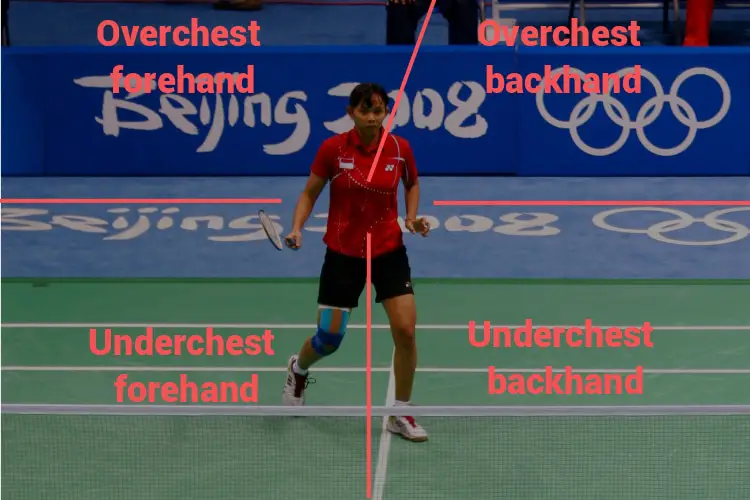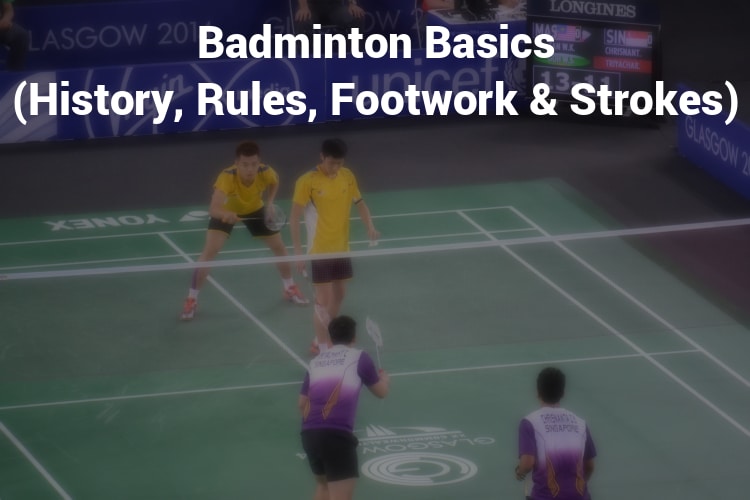Badminton is a racket sport, distinctive from all the other racket sports for the use of a shuttlecock as a projectile, instead of a ball. The shuttlecock is a feathered or plastic projectile with a cork base. It reaches higher speeds and decelerates much faster than a ball.
Badminton is usually played as a singles game (1 against 1) or as a doubles game (2 against 2). It is one of the only sports where men and women play together (mixed doubles) in international competitions.
Even though professional badminton is heavily regulated, with an indoor controlled environment, badminton is also known for being played outdoors, especially in the countries where it is most popular, India and China.
Do you want to improve your badminton game? Then be sure to sign up for Badminton Famly+ by clicking here. Founded by former World Champion Thomas Laybourn, Badminton Famly+ is the best online training platform for badminton.
Basic history
The exact origin of badminton remains obscure. However, it was developed in the middle of the 19th century among the British as a variant of the earlier game known as battledore and shuttlecock.
One of the most popular theories is that it originated from the British expatriates in India.
The sport was officially launched by the Badminton Association of England in 1893. Shortly after that, in 1899, the Badminton Association of England started the All England Open Badminton Championships. The All England is still one of the most famous badminton tournaments.
In 1934, the Badminton World Federation was founded by England, Scotland, Wales, Canada, Denmark, France, Ireland, the Netherlands, and New Zealand. India joined as an affiliate in 1936. The Badminton World Federation now governs international badminton and the main competitions such as the World Championships.
Where is it played?
First, it might be interesting to divide where badminton is played into two different sections. The first section will explain where badminton is played at a professional level. The second one will explain where badminton is played as a recreational sport.
Where is badminton played at a professional level?
Badminton is played indoors, either on the floor of the sports hall or on a badminton mat, on a court with the following measurements:
- Length: 13.4 meters
- Width:
- Doubles: 6.1 meters
- Singles: 5.18 meters
The court is divided into two equal halves by a net and each player or team plays on a side of the net.
Where is badminton played as a recreational sport?
As a recreational sport, badminton can be played either indoors or outdoors. However, playing outdoors becomes very difficult when there is a little bit of wind due to the low weight of the shuttle.
If playing indoors, usually the court size will be the standard one. While playing outdoors, most likely there will be no court or the court will have a bespoke size to fit the place where badminton is being played.
Basic rules
Badminton is usually played as a singles game (one against one) or as a doubles game (two against two).
The basic rules of badminton are based on the simplified rules from the BWF and can be divided into two sections, serving and scoring:
Scoring system
A badminton match consists of the best of 3 games of 21 points. That means that the first player or team to win 2 games wins the match.
Every time there is a service, there is a point scored. Obviously, the side winning the rally is the one that adds a point to its score. Moreover, the side that wins the rally will be the one to serve in the following rally.
When the game ties at 20-20, the side which first gains a 2 point lead (that could be 22-20, 23-21, 24-22, etc.) is the side that wins the game. If the match reaches 29-29, the side scoring the 30th point wins the game. That side will also serve first in the next game.
Interval and Change of Ends
Apart from the scoring system, some other basic rules talk about the interval and the change of ends (or courtside). In each game, for example, when the side that is leading reaches 11 points, the players have an interval of 60 seconds, where usually the coaches join the players to give instructions. In addition to the interval at point 11, players also have a 2-minute interval at the end of each game.
As far as change of ends is concerned, players change ends (or courtside) after every game. Last but not least, if there is a third game, players will also change ends when the interval happens, so when the first side reaches 11. This way, both sides play for the same amount of time on each side of the court.
Serving
Serving is fairly easy for singles and slightly more complex for doubles. The important note for both types of matches is that you always serve diagonally. So, if you are serving from the right side of the court, you will serve to the right side of the court of your opponent, thus diagonally. This is the most important part of serving and the one that both singles and doubles share.
Apart from that, the basic rules for both vary. We will start with the basic rules for serving in singles and then we will jump onto the more complex ones for doubles.
Serving in singles
In singles, the player who starts serving with 0-0 as a score will start serving from the right side of the court. This is because, whenever the server’s score is even, the server will serve from the right side. On the other hand, whenever the server’s score is odd, the server will serve from the left side of the court.
For example, if the server wins the rally that is being played, he or she will score one point and serve from the other side of the court. If the score was 0-0 and the server wins, he will simply move to the left side of the court and serve from there.
However, if it is the receiver that wins the rally, he will (obviously) score a point and will become the server. The new server will serve from whichever side the score indicates. If the receiver has scored its first point, for example, being an odd number, he/she will serve the following point from the left side. On the other hand, if the receiver has, for example, scored its 6th point, being it an even number, he/she will serve the following point from the right side.
Serving in doubles
Serving in doubles is a bit more complicated than in singles. However, we will try to explain it in its most simple form.
The two most basic rules are the following:
First, each side has only one service. This means that, if you start serving and you lose the point, the service “passes” to the other team.
Second, players do not change their respective service courts until they win a point when their side is serving.
These two rules being clear, we can see how this unfolds.
As it happens in singles, you have to serve from whichever side your score indicates. If, for example, your team is serving and its current score is 14, then your team has to serve from the right side. Who has to serve, though? Well, it depends. If you are serving and you win the rally, you keep the service and move onto the other side of the court. If the opponents are serving and you win the rally, you get the service and however was on the right side of the court on the previous rally will serve.
Example
What does that mean? What it means is that if you serve with the 0-0 and the other team wins the rally, then the service goes to them and they will serve from the left side as they are winning 1-0. Who will serve? The player that was already on the left side when you served in the 0-0.
However, if you serve with the 0-0 and you win the rally, then you will move to the left side of the court and serve again from there, whereas the other team will stay in the same position that it was before. This way, you will serve to the other player of the opposite team.
Basic footwork
Footwork is one of the most often overlooked skills when starting to play badminton and yet it is one of the most basic and important ones. Without good and solid footwork, the chances of hitting the shuttle from an advantageous position decrease greatly.
What are the basics of footwork?
First, always be at the centre of the court when waiting for the other player to shoot. If you have to move to hit on a shuttle, make sure you return to the centre in order to wait for the next shot.
Second, while waiting in the centre, you need to be in the following position:
- Your knees should be slightly flexed
- Your feet should not be flat on the floor but your heels should be slightly raised
- One of your legs should be slightly more towards the front than the other one. Which one? Well, if you are right-handed, your right leg should be slightly forward. If you are left-handed, your left leg should be slightly forward.
Now, the number of steps you take to reach the shuttle will depend on your level. The most important thing to remember, though, is to do the last step properly. The last step ensures that you can quickly go back to the centre and it is the one that you will always need to do.
For a specific description of the right footwork to reach the four main corners of the court, check the video above from
Swift Badminton where this is perfectly explained.
Basic strokes
There is a lot of different ways to hit a shuttle, but in this section, we will just cover the most basic strokes there are in badminton. Basically, all the different shots in badminton can be divided into four different strokes. These are four different zones where you hit the shuttle, as seen in the image below.

The first division is horizontal. We take as a
The second division is vertical and easier to understand. On one side is where you will hit the shuttle with a forehand grip/stroke and the other side is where you will hit the shuttle with a backhand grip/stroke. The following video from KC Badminton explains the forehand/backhand differentiation much better than I could by writing it.
Final words
And with this, we have arrived at the end of this post about Badminton Basics. In this post, we have given a fast introduction to the sport of badminton, followed by a bit of basic badminton history, an explanation on the environment where it is played, basic badminton rules and a quick explanation on basic movements of the body (footwork and strokes).
Did you like this introduction to the fastest racket sport? Then let us know in the comments below!

